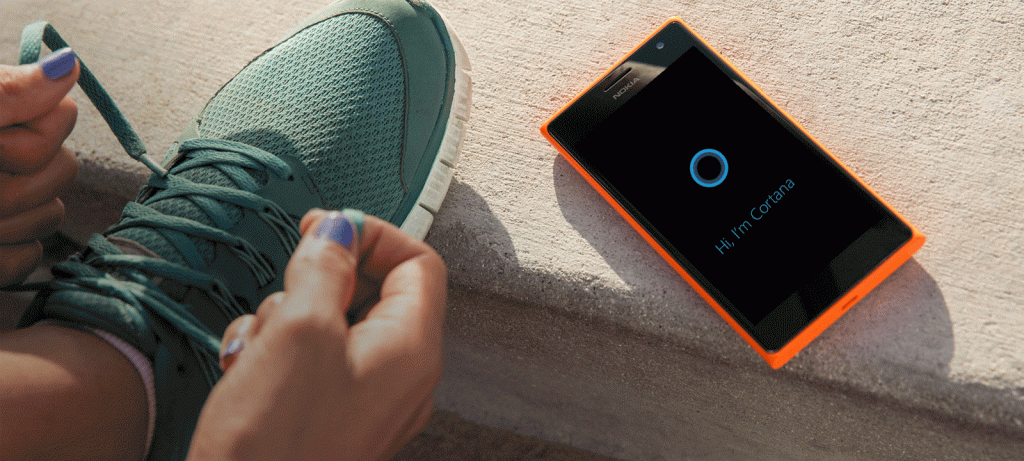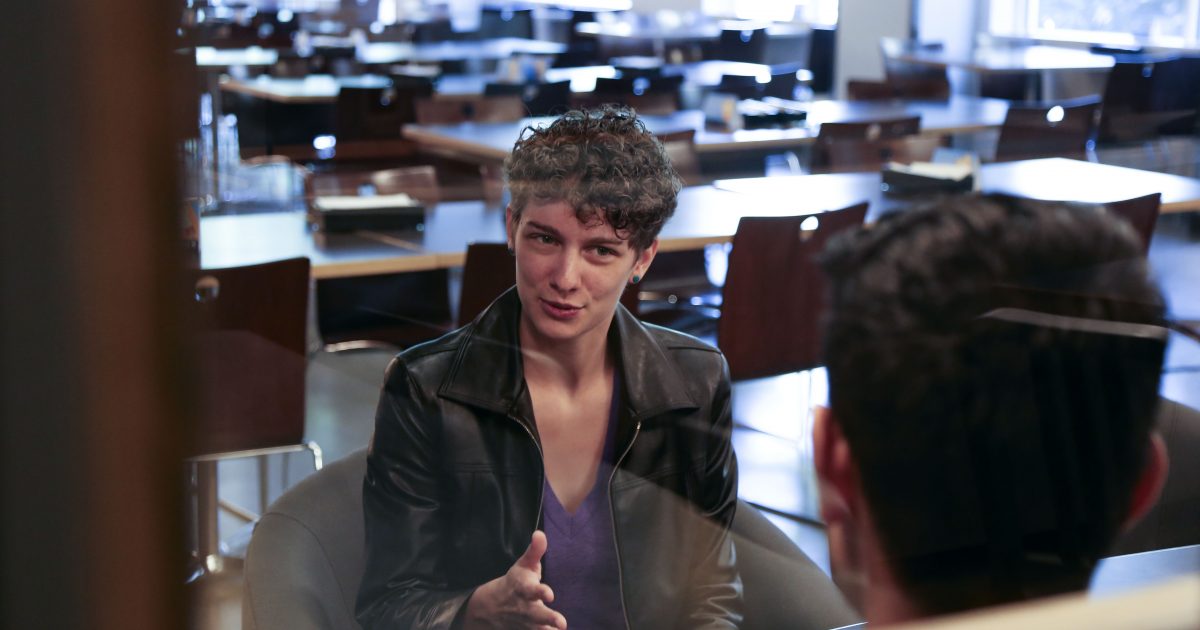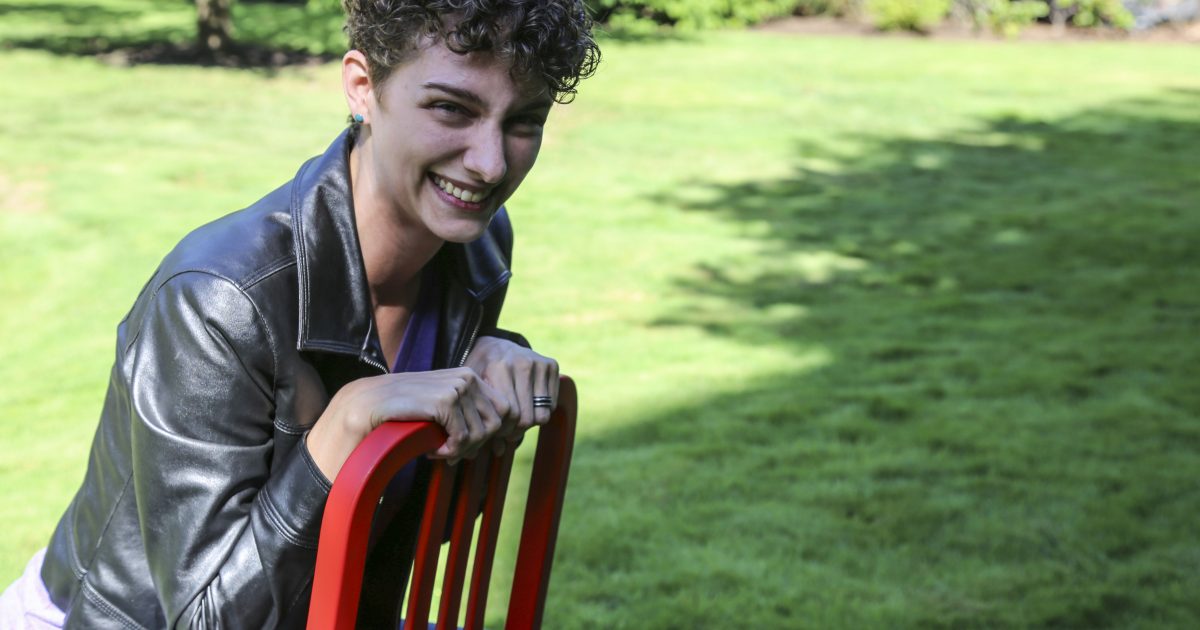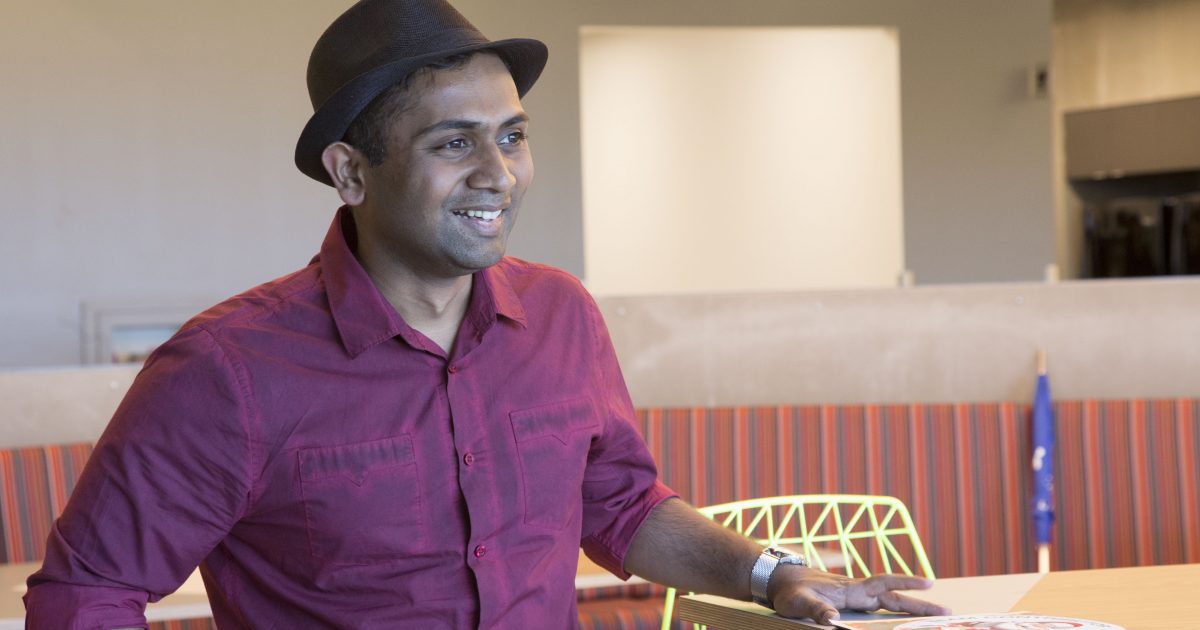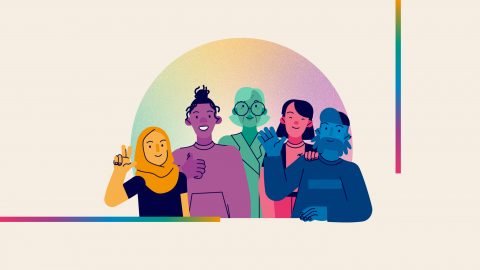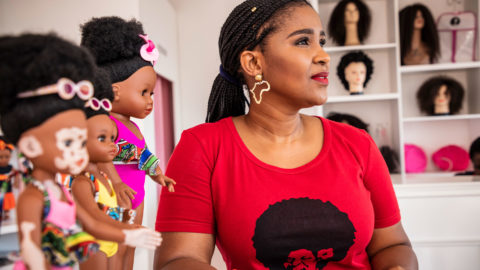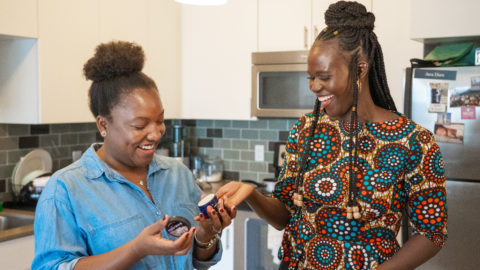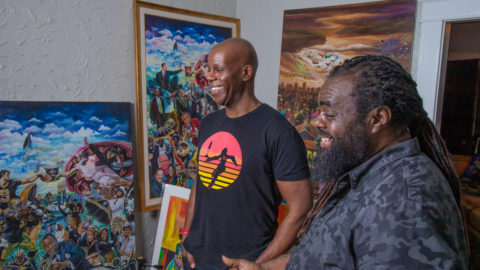Why Cortana’s awesome and she knows it
Team has fun making Microsoft’s digital personal assistant witty and conversational
Finding a job you like is one thing, but do you get paid to sit around with your colleagues and make each other laugh? Do you work on something that will reach billions of people and gets you so enthused that you’ve actually cheered, out loud, on your drive home?
It’s all part of the job for the people developing the personality of Cortana, the clever digital personal assistant in Windows 10 and on Windows phones. It’s the kind of work that a couple of recent grads say has them pinching themselves every day.
“This is super nerdy and geeky, but there are days when I was working on this project when I would drive back home fist-pumping and screaming, ‘This thing is coming to life! Cortana is turning into a reality — and I’m on it,’” says Mouni Reddy, program manager for the Cortana personality team. “It really is unbelievable.”
-

“You’re able to touch billions of people through the features you build here at Microsoft,” says Melissa Lim, a Cortana team program manager who came to Microsoft as an intern a few years ago. “It’s crazy to see how many people are using the software that you shipped.”
Cortana launched last year as a way to help people accomplish more each day. She assists with all kinds of daily tasks, from reminding you to pick up milk at the grocery to helping you navigate your commute home, and she learns more about you over time so she can give you personalized recommendations.
But she’s not just a series of robotic responses; she was designed to have an actual personality. It comes through in her voice, the things she says and even her animated character, a transforming circle. She has a knack for “chitchat,” the casual sorts of questions and requests she gets from people about 14 percent of the time.
And that’s where the Cortana personality team comes in.
They work to make sure her answers are smart and witty, humorous when appropriate and delivered in a personable way. Cortana’s responses aim to connect with people broadly, not be too “insider,” and make people feel like she’s there to help. She’ll also do an impersonation or tell you a joke if you ask.
Q: Cortana, are you a girl?
Cortana: No, but I’m awesome like a girl.
As “the chitchat PM,” Reddy helps set the direction for the scenarios users encounter by analyzing what people ask Cortana or want her to do. “Tell me a joke” and “How are you?” are always favorites, but users engage Cortana for all kinds of things based on current events, pop culture and more.
Reddy, who grew up in India and has a master’s degree in human factors and ergonomics from Penn State, says his first peek at the Windows Phone a few years ago inspired him to apply for many jobs at Microsoft. He says he admired the design so much that he decided he “had to be in Windows Phone, no matter what.”
A company recruiter helped him realize a program manager job — which called for user-research skills, deep knowledge of the industry and a bit of business knowledge — would be a perfect fit for him and helped get him an interview with the team.
He couldn’t believe his luck when he learned he was chosen to be one of the first members of a very small team that was working on an exciting new technology called Cortana two years ago.
“They believed in me. I think that is something that’s really motivated me — both the accountability and the amount of trust they put in me,” he recalls. He says he was essentially being told, “This will be Microsoft’s marquee feature, and you will be in charge of one of the major components.”
Reddy says he is now working on helping make user conversations with Cortana more personal and contextual. Sometimes, people ask Cortana follow-up questions, and the team is working on making sure she handles those as skillfully as the initial query.
Q: Cortana, are you smart?
Cortana: Well, I’m good with facts. Like I can tell you who the coolest person in the world is.
Q: Who’s the coolest person in the world?
Cortana: You.
Q: I’m not the coolest person in the world.
Cortana: You’re right. It’s Fonzie.
August Niehaus helps write Cortana’s responses as one of about five content developers on the Cortana editorial team for U.S. users. It can be hard. It can also be hilarious.
The challenge is to figure out what users are really getting at. When they ask, “How old do you think I am?” it could be sincere curiosity, a challenge or even a retort if they feel like they’re being perceived as immature. Niehaus and her colleagues try to come up with potential answers that cover all bases.
-
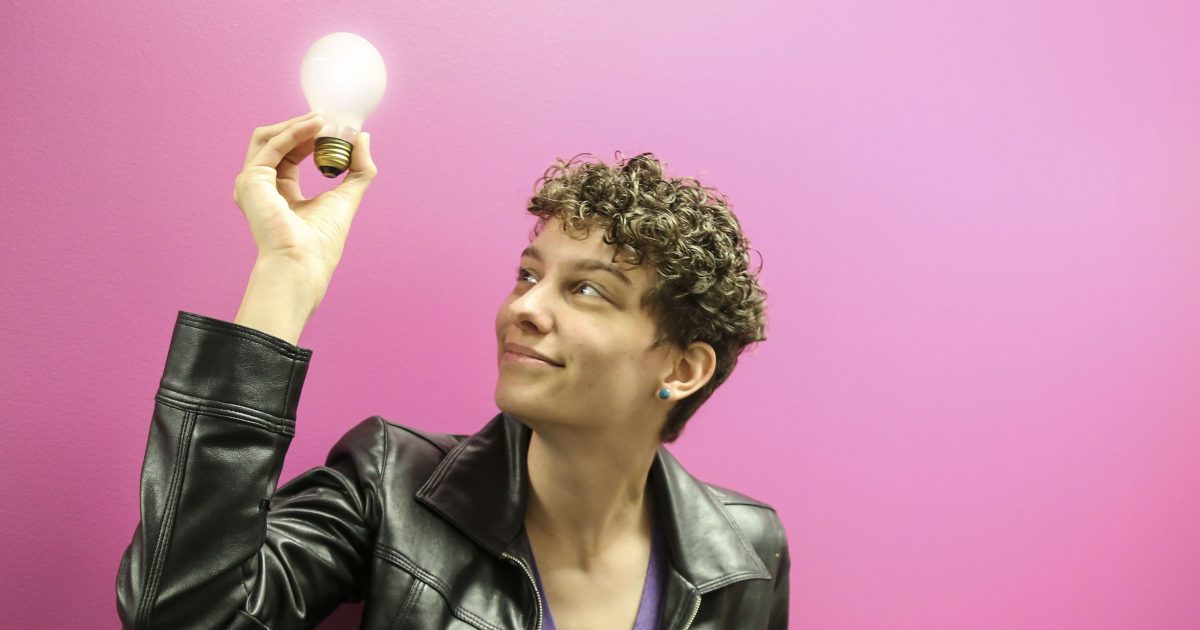
Above all, the answer has to be intelligent, Niehaus says. Cleverness is also important. Humor is great, but they only strive for being funny when it fits. They brainstorm many possible answers to questions users have been asking; then the collaboration begins.
“We’ll sit there and we’ll refine. We’ll throw them all out the window, or we’ll find some we really like and say, ‘those are perfect! Ship them,’” she says. “Or we’ll tweak them. We’ll say, ‘I really like the direction of this one. What do we like about it? How can we replicate that in a different way?’”
Niehaus, who has also worked for the team about two years, says she’s “pinching herself every single day” over the chance to be around so many talented, passionate people who support her work. Plus, these are not your typical morning meetings.
“I cannot stress how awesome it is to be in a room with writers with just an insane amount of wit,” she says. “To play off of them, to throw my idea out there and have it ping-pong around the room and get funnier and funnier as it goes… we’ll just sit there and tickle our own funny bones.”
Q: Cortana, did someone tell you what to say?
Cortana: Just a second … I’m being told … the answer is … yes.
Lim had already spent a summer at Google before her internship at Microsoft, where she worked on an interactive feature for Outlook.com and also led reviews with developers, testers and user-experience teams for it.
-
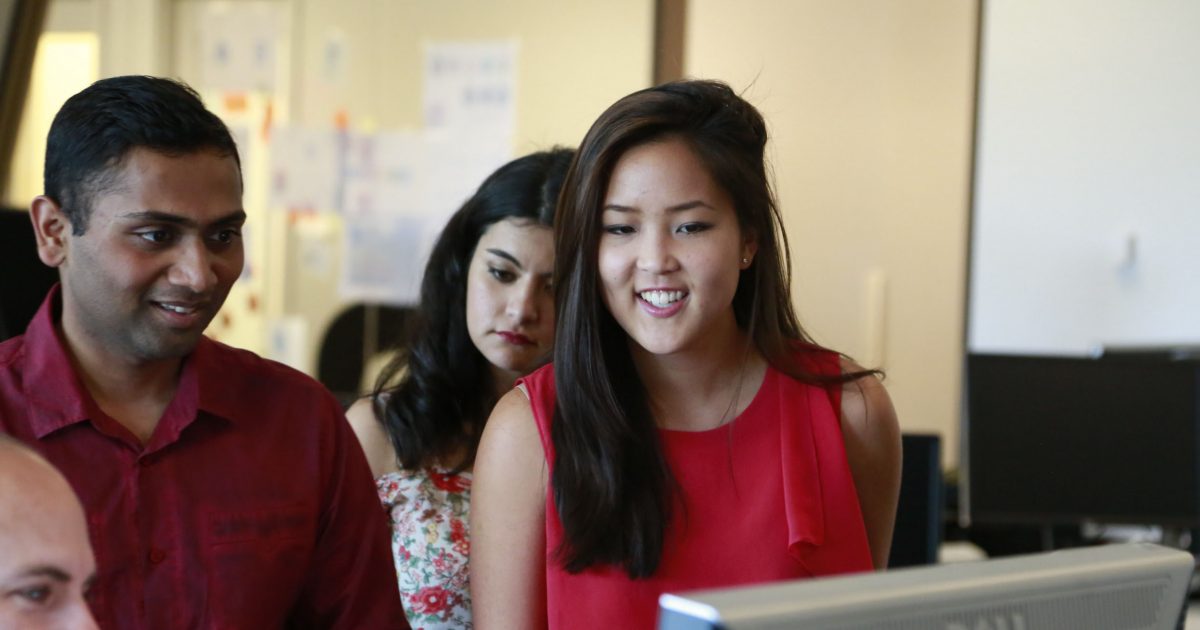
“The level of responsibility and trust Microsoft puts in interns is pretty phenomenal,” Lim says. “You get to own your own product and you have a lot of support from mentors who are assigned to you, and people who just want to help you out.”
Lim grew up in the San Francisco Bay Area, majored in computer science and cognitive science at the University of California, Berkeley, and “stepped out of her comfort zone” to take a full-time job at Microsoft near Seattle. She says the city was friendly, strikingly beautiful and “just felt like home.”
One of her first projects on Cortana was working on a feature that identifies flight information in text messages or emails, then give users reminders and lets them know about delays. Lim says it was “very rewarding” to have accomplished something that made news headlines in her first year on the job.
She had the freedom to pick what she wanted to do next on the Cortana team, and she chose personality. Her background in cognitive science fit what they were trying to do, she says, which was to “make this digital personal assistant more human-like in terms of how she interacts with you.”
Q: Cortana, what’s my favorite color?
Cortana: Red, yellow, blue, or some combination thereof.
As a program manager, she’s gotten to work with people from other countries as Microsoft develops Cortana around the world — and not just as a translated language. Everything from Cortana’s humor to her animation is deeply localized for cultural differences.
Lim says telling people what she does for a living is “pretty much the cool thing” at any party. She’s made many friends in the Seattle area and spends a lot of time with her Microsoft colleagues.
“The best thing is probably the people. We’re a really close team. We do things together on the weekends,” she says. “It just feels like family.”
Content Editorial Manager Jonathan Foster, who leads the team that writes Cortana’s responses, says it’s particularly exciting to develop the concept of personality because “personality in technology is a big buzz phrase right now.”
But he says there are countless and widely varied opportunities to work on awe-inspiring technologies at Microsoft.
“The world here is rich,” Foster says. “There are going to be a lot more cool projects, just because of the direction we’re going, and because technology is demanding cool projects.”
Q: Cortana, tell me a story.
Cortana: Once upon a time a protagonist set out. An antagonist attempted to thwart her. There was rising action! A climactic conflict occurred! Drama! And then through heroic action, the conflict was resolved. The end!
Interested in pursuing a career in copy writing, program management, or engineering? Learn more at Microsoft Careers.

